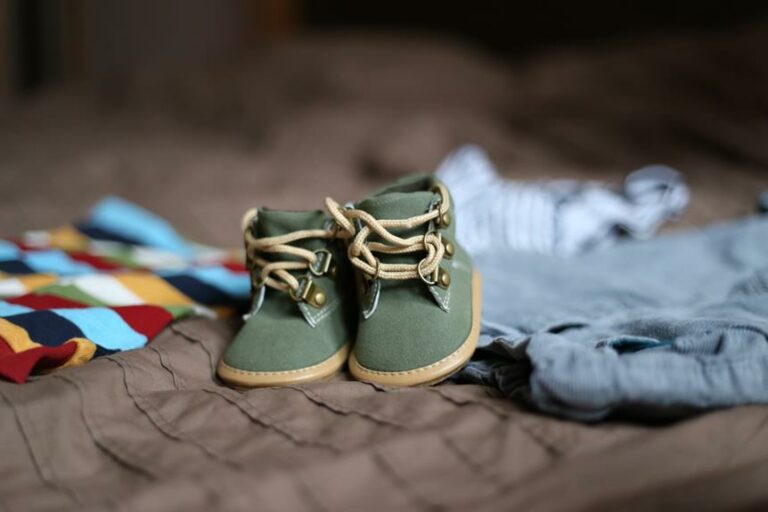Are you ready to take your scuba diving gear to the next level?
Dive into this comprehensive buyer's guide to scuba booties and discover the perfect pair to enhance your underwater adventures.
These neoprene boots are like protective shields for your feet, offering insulation, comfort, and defense against potential hazards.
From determining the right thickness based on water temperature to finding the perfect fit and style, this guide has got you covered.
Get ready to make an informed decision and upgrade your diving experience.
Key Takeaways
- The thickness of scuba booties should be chosen based on the water temperature, with 2-5mm being suitable for warm water diving and 5+mm for cold water diving.
- The style of scuba booties, including the sole type and cut, should be selected based on the type of diving and personal preferences.
- When determining the size of scuba booties, start with your shoe size and round up if you are a half size. Women should subtract 1 or 2 sizes from their shoe size.
- Proper care and maintenance of scuba booties include rinsing them with fresh water, using wet suit shampoo occasionally, inspecting for damages, and storing them properly to maintain insulation effectiveness.
Scuba Booties Thickness
When choosing scuba booties, consider the thickness that's suitable for your diving conditions.
The thickness of scuba booties is important for two main reasons: proper insulation and impact on buoyancy control.
Proper insulation is crucial to keep your feet warm, especially in cold water diving. Thicker booties, such as those with 5+mm thickness, provide better insulation and prevent heat loss. This is essential for comfort and safety during extended dives in colder temperatures.
Additionally, the thickness of your booties can affect your buoyancy control. Thicker booties add more buoyancy and can make it harder to achieve proper trim and control underwater. On the other hand, thinner booties offer less buoyancy, which can be beneficial for maintaining neutral buoyancy and precise movements.
Consider these factors when selecting the appropriate thickness for your scuba booties.
Scuba Booties Style
Consider the style of scuba booties that best suits your diving needs. When choosing scuba booties, it is important to consider the material and price range. Scuba booties are typically made of neoprene, a synthetic rubber that provides insulation and flexibility. Neoprene is durable and resistant to water, making it an ideal material for dive boots. The price range for scuba booties can vary depending on the brand and features, ranging from $30 to $100. It is important to find a balance between quality and affordability when selecting scuba booties. The table below provides a visual representation of different scuba bootie styles and their corresponding features:
| Style | Features | Suitable for |
|---|---|---|
| Low cut | Lightweight and less buoyant | Warm water diving |
| Mid-height | Good balance between warmth and flexibility | Warm water diving |
| High cut | Added warmth and insulation | Cold water diving |
| Zipped | Easy on and off | Cold water diving |
| Slipper type | Thin and flexible | Warm water diving |
Choose the style of scuba booties that best aligns with your diving preferences and conditions.
Scuba Booties Size and Fit
To ensure a proper fit for your scuba booties, it's essential to consider the size that best aligns with your shoe size and the thickness of your wetsuit. Here are some sizing tips and ideas to ensure a proper fit for your scuba diving boots:
- Start with your shoe size when determining the correct size of scuba booties.
- Scuba boots only come in whole sizes, so round up if you're a half size.
- Women should subtract 1 or 2 sizes from their shoe size as a starting point.
- Scuba dive boots should fit snugly but not too tight or loose.
- Ensure that your toes aren't curled up in the end of the boot.
Scuba Booties Care and Maintenance
To properly care for your scuba booties, it's important to rinse them in fresh water after diving to remove salt water and maintain their flexibility.
After rinsing, soak your scuba booties for about 15 minutes in a mixture of fresh water and wetsuit shampoo. This will help to remove any dirt or debris that may have accumulated during your dive.
Gently scrub the boots with a soft brush to ensure thorough cleaning.
After cleaning, inspect the booties for any rips or tears. If any damage is found, repair it promptly to prevent further deterioration.
When storing your scuba booties, make sure to properly dry them to prevent the growth of mold or mildew. Avoid storing them in direct sunlight, as this can cause the neoprene to degrade. Instead, store them in a cool, dry place away from any sources of heat or moisture.
Choosing the Right Fins
When choosing the right fins for scuba diving, it's important to consider factors such as blade design, material, and size. The type of fin you choose will greatly affect your underwater propulsion and maneuverability.
Here are four key considerations:
- Fin Types: There are different types of fins available, including paddle fins, split fins, and force fins. Paddle fins provide powerful thrust but require more effort, while split fins offer a more relaxed kick with increased efficiency. Force fins are compact and lightweight, ideal for travel or snorkeling.
- Fin Materials: Fins are commonly made from materials such as rubber, plastic, or composite. Rubber fins are durable and provide good propulsion, while plastic fins are lightweight and economical. Composite fins combine the benefits of both materials for enhanced performance.
- Blade Design: The design of the fin blade affects its flexibility and efficiency. Stiffer blades offer more power but require more effort. Flexible blades provide a smoother kick but may be less efficient. Consider your diving style and comfort level when selecting the blade design.
- Fin Size: Finding the right fin size is crucial for comfort and performance. Fins that are too small can cause discomfort and foot cramping, while fins that are too large may lead to inefficient propulsion. Take accurate measurements of your foot and consult the manufacturer's sizing chart to ensure a proper fit.
Free Report and Diving Tips
If you're looking to improve your diving skills and stay updated with the latest information, our website offers a free report and provides practical tips on a regular basis.
Our free report provides diving gear recommendations, including scuba booties, to help you make informed decisions when purchasing equipment. Additionally, our website offers valuable underwater photography tips to enhance your diving experience. We understand the importance of having the right gear and knowledge to capture those unforgettable underwater moments.
Whether you're a beginner or an experienced diver, our diving tips are designed to help you optimize your skills and stay safe in the water. Stay connected with our website for new content and articles related to scuba diving, and take advantage of our free report and diving tips to enhance your diving adventures.
Common Scuba Diving Mistakes
Avoid these common scuba diving mistakes that can hinder your underwater experience and put your safety at risk. To ensure scuba diving safety and enhance your underwater photography techniques, keep the following in mind:
- Failure to perform proper pre-dive checks: Skipping essential equipment checks such as inspecting your mask, regulator, and buoyancy control device can lead to equipment malfunction or failure underwater.
- Ignoring dive limits: Going beyond your certification level, diving in unfamiliar conditions, or neglecting dive profiles can result in decompression sickness or nitrogen narcosis.
- Poor buoyancy control: Improper weighting, excessive finning, and lack of awareness of your surroundings can lead to unintentional damage to the reef or other marine life, compromising both your safety and the environment.
- Inadequate communication: Failing to establish clear hand signals or neglecting to maintain contact with your dive buddy can lead to confusion, separation, or missed opportunities for capturing breathtaking underwater photographs.
Tipping Etiquette
Remember to consider tipping etiquette when diving to show appreciation for exceptional service.
Tipping is a common practice in the diving industry and can vary depending on the location and level of service provided.
When it comes to scuba booties, it's important to note that tipping is typically not expected specifically for the purchase of scuba booties. However, if you receive exceptional assistance in selecting the right scuba booties, you may choose to show your appreciation by leaving a small tip.
It's always a good idea to research the local customs and norms regarding tipping in the diving community.
Keep in mind that tipping is a personal choice and should be based on your own judgment and satisfaction with the service received.
Tips for First-Time Divers
When preparing for your first dive, it's essential to gather the necessary information and equip yourself with the right scuba booties. Here are some tips to help you make the most of your first diving experience:
- Choose beginner-friendly dive sites: Look for dive sites that are known for their calm waters, good visibility, and abundant marine life. This will make your first dive more enjoyable and less overwhelming.
- Practice underwater photography skills: Underwater photography is a popular activity among divers. Before your first dive, familiarize yourself with basic underwater photography techniques and consider investing in a waterproof camera or housing.
- Follow the guidance of experienced divers: When diving for the first time, it's crucial to have a knowledgeable and experienced dive buddy or instructor by your side. Follow their guidance and instructions to ensure a safe and enjoyable dive.
- Relax and enjoy the experience: Diving can be an exhilarating and awe-inspiring experience. Remember to take deep, slow breaths and enjoy the underwater world around you. Stay calm and have fun!
Frequently Asked Questions
Are Scuba Booties Necessary for Diving?
Yes, scuba booties are necessary for diving. They provide several benefits such as protection, insulation, and grip. Compared to dive socks, booties offer better foot support and durability underwater.
Can I Wear Scuba Booties Without a Wetsuit?
Yes, you can wear scuba booties without a wetsuit. They provide protection and grip for water sports. Proper care involves rinsing with fresh water, using shampoo occasionally, inspecting for damage, and storing correctly to maintain their effectiveness.
How Do I Know if My Scuba Booties Are the Right Size?
To determine if your scuba booties are the right size, follow this Scuba Booties Sizing Guide. Measure your foot length and compare it to the manufacturer's sizing chart. Ensure a snug fit without curling toes.
Can I Wear Scuba Booties With Open-Heel Fins?
Yes, you can wear scuba booties with open-heel fins. It provides enhanced comfort, protection, and improved grip. Booties prevent blisters, reduce foot fatigue, and keep your feet warm. Enjoy your dive with this compatible combination.
How Often Should I Replace My Scuba Booties?
When is the best time to replace scuba booties? Proper care, including rinsing with fresh water after diving, using wet suit shampoo, and inspecting for damage, can extend the life of your booties.

